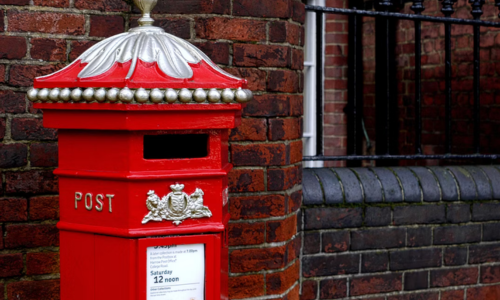Technology drives most of what we do in our day-to-day lives. Communication is at our fingertips -smartphones equipped with email, instant messaging applications and social media make sure we can communicate with anyone, anytime, anywhere. However, there is something missing … that human touch, personalisation and connect, all of which was integral to writing letters. Today, the art of letter writing is considered outdated. This is the same medium that gave expression to our deepest thoughts, strengthened our bonds with loved ones and created memories that we could cherish. While it may be quicker, efficient and easier, words pulsing through electronic devices seems inadequate. Which is why perhaps letters will always retain their relevance and appeal to me. Though I can’t vouch for Gen Z that has perhaps never seen a post office, letter box or even a postman!
Growing up, the letter-box and postman held great significance. I have many fond memories, especially from my college days, when I looked forward to receiving letters from my father. In fact, I fondly held on to some letters from my father, where he shared wisdom and words of encouragement. This was a time when the postman was very sought after and a letterbox could be seen in every locality: red and black, with a plate showing when the postman will come to take the next lot of letters. Post linked the entire nation together – be it urban or rural India, postman was dear to all. The bell of his cycle alerted people as the capped and uniformed postman importantly shuffled through his stack to hand over letters and postcards to anxious/excited faces. In rural areas the postman was much more than a mere bearer of letter/postcard/telegram. He also read and wrote letters and messages for people, becoming an integral part of the community.
So, what makes letters and postcards special? They hold emotions within them. Taking the time to send a thoughtful letter shows you cherish a relationship and want to invest in it. The writing is personalised and in the handwriting of the author, who put in an effort to pen down thoughts and messages, at times using every centimetre of space be it the margins or the sides! Back in the day people wrote long letters, giving detailed accounts of their lives and enquired about the well-being of others. Some were emotional, some shared joy and some anecdotal. Everyone has letters that they have held onto, in fact, even museums have letters and postcards chronicling landmark events in history. Now, an email or WhatsApp chat does not hold the same appeal even if we manage to preserve them.
Sadly, as in the rest of the world, the letter-box and postal system is fading away in India. We barely see any letter-boxes or even know our local postman. We prefer pushing our fingers on the screen/keypad over holding a pen to write to each other. Communication has been reduced to likes, emojis, voice notes and shares as technology slowly takes away the emotion from communication.
Efficiency over Emotion?
Modern communication, be it via WhatsApp, Zoom, email or social media, has undeniably become faster and more efficient. The ease of use and ability to instantly connect has erased geographical boundaries. However, the ease of communication has also taken away the emotion behind connecting with one another. We punch the keyboard and it corrects the spelling, pre-empts the next word and even suggests an emoji – all too mechanical. Given the message we send gets delivered almost instantaneously, we expect a reply in real time, leaving no room for thoughtful writing. We seek instant gratification in the form of likes, comments and shares instead of soaking in the emotions of a thoughtful letter full of love and wisdom. I receive one precious letter (hand written) every year from my sister on a Rakhi day – how I wish there were more!
Like everything else, technology is quickly transforming how we communicate but what is lost is the emotion behind it. It started with the internet, then smartphones and now AI and Robotic Process Automation (RPA) is redefining how we communicate. We are now looking at ‘social robots’ and AI systems that are learning to communicate with humans. Yes, human-bot relationship is a real thing now! Robots are serving meals at restaurants, taking orders or even scheduling meetings. We have IVR, automated responses and chatbots instead of human customer care. While it is thrilling to see what technology can do, communication has become in your face and the human touch is gone, taking away the spirit of interacting with others, which letters did beautifully!
In the future, we will have more and more AI systems that are smart and can perceive the world, make decisions and even support human decision-making. They will, however, take away from the human element and personalisation that is at the essence of communication. With fast changing times, the postal system too needs to adapt. It can co-exist with emerging technologies if it reinvents itself and takes on new roles to meet emerging expectations. There are many who miss correspondence by post and still collect postcards and stamps, holding on to nostalgia. In fact, there is an initiative called ‘Postcrossing’ that connects people from around the world by exchanging post cards!
However, setting the nostalgia aside, one wonders whether the next generation will have the patience for such long-drawn methods of communication if we were to preserve it. Because truth be told, even the older generation is starting to find modern means of interacting more convenient. What remains however, is the memory of the thrill of receiving a letter with your name on it and rushing to open it only to read it over and over again….





